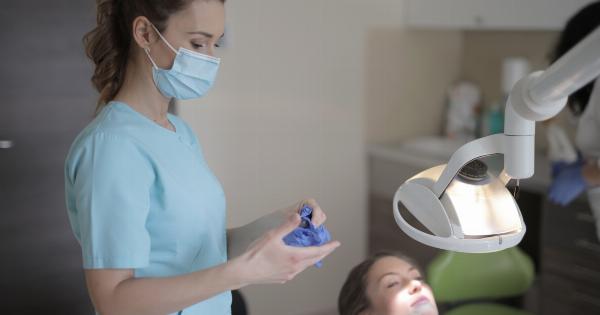Driving is an essential skill that many people rely on for their daily lives. From commuting to work to running errands, driving is a necessary means of transportation. However, not everyone is naturally adept at driving.
Some individuals struggle with coordination, reaction time, or spatial awareness, which can make them less confident and less safe on the road. But what if there was a way to improve these skills through surgery? In recent years, an innovative surgical procedure has emerged that claims to enhance a person’s driving abilities.
In this article, we will explore the details of this surgery and whether it is a viable option for those looking to become better drivers.
The Procedure: What Does It Involve?
Known as “Driving Skills Enhancement Surgery” (DSES), this procedure aims to improve an individual’s driving skills by targeting specific areas of the brain responsible for spatial awareness, coordination, and reaction time.
The surgery relies on advanced neurosurgical techniques and equipment to precisely modify or enhance these brain functions.
Who is Eligible for DSES?
Not everyone is a suitable candidate for DSES. The procedure is typically recommended for individuals who have undergone extensive driver training but still struggle with certain aspects of driving performance.
Some common criteria for eligibility include:.
- Limited spatial awareness
- Difficulty coordinating hands and feet
- Impaired reaction time
- Trouble maintaining focus while driving
- Previous accidents or near-misses due to driving skills
However, it is important to note that DSES is not a guaranteed solution for all driving-related issues. A thorough evaluation by a qualified medical professional should determine whether an individual is a suitable candidate for the surgery.
Understanding the Procedure
DSES is a complex surgical procedure that requires extensive medical expertise. The surgery typically involves the following steps:.
1. Pre-Operative Assessment
Before the surgery, the candidate will undergo a comprehensive assessment to determine the specific areas of their brain that need improvement.
This may involve cognitive tests, neuroimaging scans, and discussions about the individual’s driving history.
2. Anesthesia
During the procedure, the patient will be placed under general anesthesia to ensure their comfort and safety. This will render them unconscious throughout the surgery.
3. Brain Mapping
Using advanced imaging techniques such as MRI or fMRI, the neurosurgeon will identify the precise areas of the brain responsible for the individual’s driving difficulties.
This step is crucial as it ensures that only the necessary brain regions will be targeted during the surgery.
4. Surgical Intervention
Once the brain areas have been identified, the surgeon will make small incisions in the scalp and create tiny openings in the skull to gain access to the brain. Using specialized instruments, they will then modify or enhance the targeted brain regions.
The exact technique may vary depending on the individual’s specific needs.
5. Recovery and Rehabilitation
After the surgery, the patient will be closely monitored in a hospital setting to ensure their recovery is progressing smoothly.
Once discharged, they will typically undergo a rehabilitation program that includes physical and cognitive exercises aimed at enhancing their driving skills.
Potential Benefits and Risks
DSES holds the promise of improving a person’s driving skills and overall road safety. Potential benefits may include enhanced coordination, improved reaction time, heightened spatial awareness, and increased focus while driving.
This could lead to fewer accidents and a higher level of confidence behind the wheel.
However, like any surgical procedure, DSES carries certain risks. These may include infection, bleeding, adverse reactions to anesthesia, or unintended changes in brain function.
It is crucial for individuals considering the surgery to thoroughly discuss the potential risks and benefits with their healthcare provider before making a decision.
Post-Surgery Considerations
Following the surgery, individuals should be aware of certain factors that may impact their driving abilities. Some of these considerations include:.
- Recovery time: It may take several weeks or months to fully recover from the surgery. During this time, individuals should refrain from driving and follow their healthcare provider’s guidelines.
- Adapting to changes: After the surgery, individuals may experience slight changes in their brain function. It is important to adjust and adapt to these changes to ensure safe driving.
- Continued practice: While the surgery may enhance driving skills, ongoing practice and driver training are still essential to maintain and further improve these abilities.
The Future of DSES
Driving Skills Enhancement Surgery is a relatively new and evolving field. As technology advances, further research and refinements in surgical techniques are likely to occur.
It is possible that future developments may lead to safer, more effective procedures, and expanded eligibility criteria for individuals seeking to improve their driving skills.
Conclusion
Driving Skills Enhancement Surgery offers a potential solution for individuals struggling with specific driving-related difficulties.
While the procedure shows promise, it is essential to consider individual circumstances, risks, and ongoing commitments, such as rehabilitation and continued driver training. Consulting with a qualified healthcare provider is crucial to determine whether DSES is the right choice.
With further advancements in medical science, the future may bring even more effective interventions to enhance driving skills and improve road safety for everyone.































